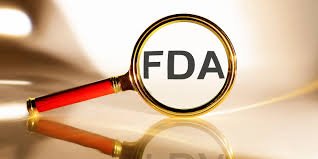How FDA Inspections are Conducted in Manufacturing Facilities

🏭 How FDA Inspections are Conducted in Manufacturing Facilities
1. Pre-Inspection Phase
-
FDA identifies facilities to inspect based on:
-
Risk-based selection (product type, compliance history, criticality, recalls, complaints).
-
New drug approval or pre-approval inspection (PAI).
-
Routine surveillance inspections.
-
-
Inspectors review prior inspection history, 483s, warning letters, and regulatory submissions.
2. Investigator Arrival & Introduction
-
FDA inspectors arrive (sometimes unannounced).
-
Present Form FDA 482 (Notice of Inspection) to management.
-
Opening meeting with senior leadership to explain inspection scope, objectives, and duration.
3. Inspection Execution
The inspection follows 21 CFR Parts 210, 211, and applicable guidance. Investigators use the FDA Systems-Based Inspection Model, focusing on six quality systems:
-
Quality System – Change control, CAPA, deviations, audits.
-
Facilities & Equipment – Design, maintenance, cleaning validation.
-
Materials System – Supplier qualification, raw material testing, storage.
-
Production System – Batch records, in-process controls, line clearance.
-
Packaging & Labeling System – Label controls, reconciliation, mix-up prevention.
-
Laboratory Controls System – Data integrity, OOS/OOT, method validation.
✔ Inspectors observe operations directly (“Gemba walk”) and may request live demonstrations.
✔ Review of SOPs, batch records, deviations, CAPA, training files.
✔ Interviews with personnel at all levels.
✔ Sampling/testing of raw materials, intermediates, or finished products if required.
4. Focus Areas During Inspection
-
Data Integrity – ALCOA+ compliance, audit trails, contemporaneous records.
-
Cleaning & Cross-Contamination Controls.
-
Sterility Assurance / Microbial Control.
-
OOS Investigations – thoroughness and scientific justification.
-
Change Control & CAPA Effectiveness.
-
Supply Chain & Outsourcing Oversight.
5. Daily Wrap-Ups
-
Investigators often hold short daily meetings to highlight concerns.
-
Gives company a chance to provide clarifications or missing documentation.
6. Close-Out Meeting
-
At the end of inspection, inspectors conduct an exit meeting.
-
If deficiencies are observed, they issue Form FDA 483 (Inspectional Observations).
-
Observations are discussed with company management.
-
If no significant deficiencies, inspection may close “No Action Indicated (NAI).”
7. Post-Inspection Phase
-
Company must respond to Form 483 in 15 working days, detailing corrective actions.
-
FDA reviews response and may:
-
Accept the CAPA plan.
-
Issue Warning Letter if issues are serious.
-
Recommend regulatory action (import alert, consent decree, product seizure).
-
✅ Best Practices to Handle FDA Inspections
-
Maintain inspection readiness at all times.
-
Ensure documentation is contemporaneous, accurate, and complete.
-
Train staff to answer questions factually and confidently.
-
Keep facilities and records organized and audit-ready.
-
Address inspector concerns immediately where possible.
🎓 Discover one of the best Complete Pharmaceutical Quality Assurance Course available —click below to explore the course that’s shaping future in QA Course skills.

